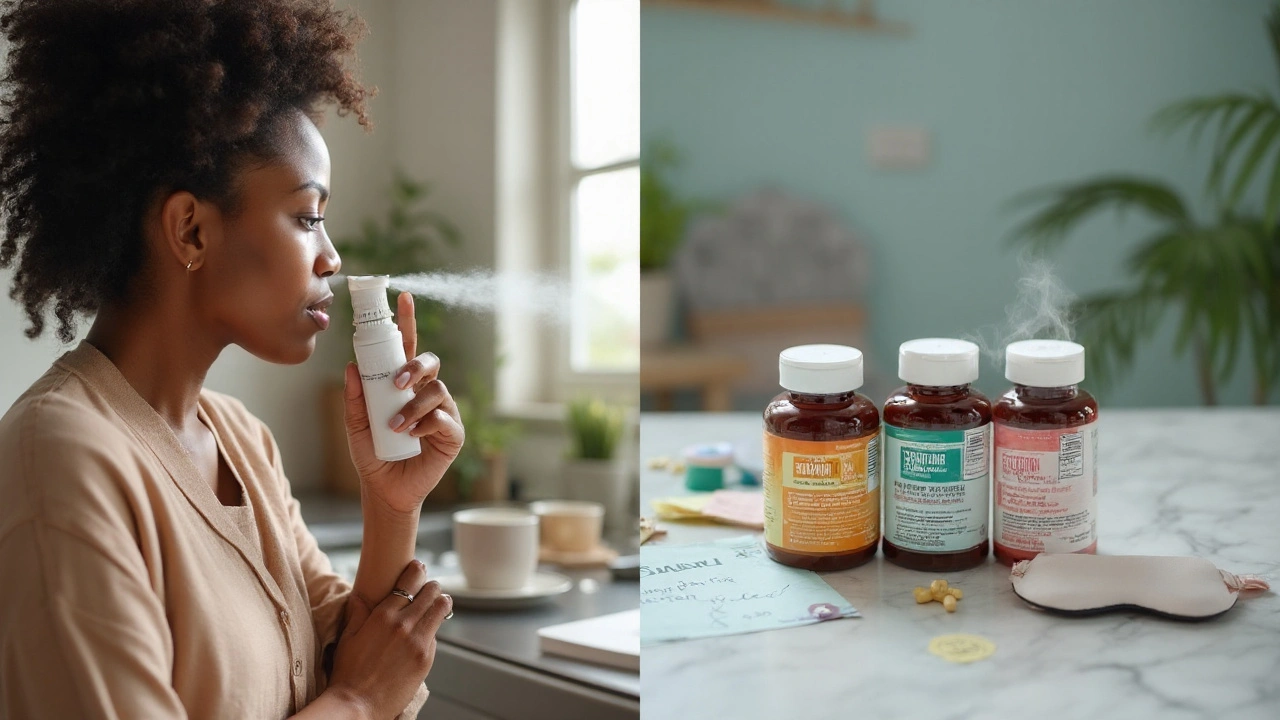Intranasal Antihistamine: Quick Relief for Nasal Allergies
If you’re tired of sneezing, runny nose, and itchy eyes, an intranasal antihistamine might be the answer. Unlike oral pills, these sprays go straight to the place where allergy symptoms start – the nasal passages. That means faster relief and often fewer side effects.
How Intranasal Antihistamines Work
Antihistamines block a chemical called histamine, which your body releases when it meets an allergen like pollen or pet dander. When you spray the medication into each nostril, it coats the lining and stops histamine from triggering swelling and mucus production. The result is less congestion, less runny nose, and fewer sneezes.
Because the drug is applied locally, you usually need a lower dose than with a pill. That’s why many people feel fewer drowsiness or dry‑mouth issues.
Popular Intranasal Antihistamine Products
Several brands dominate the market. Azelastine (brand names like Astepro or Allergic Rhinol) is one of the most common. It’s available over the counter in many countries, making it easy to grab without a prescription. Olopatadine (Patanase) is another option, often prescribed for people who need stronger control or have both allergy and allergic‑conjunctivitis symptoms.
Both sprays come in a pump bottle that delivers a measured dose (usually 1 spray per nostril). Follow the package instructions – most users start with one spray in each nostril once a day, and some doctors may advise a second dose if symptoms are severe.
Getting the Most Out of Your Spray
Here’s a quick checklist for proper use:
- Blow your nose gently before spraying to clear excess mucus.
- Shake the bottle if the label says to do so.
- Hold your head upright, tilt it slightly forward, and insert the tip into each nostril.
- Press the pump once, breathe in gently through the nose, and repeat for the other side.
- Avoid sniffing hard right after; give the medication a moment to settle.
Consistency matters. Most users notice improvement within 15‑30 minutes, but for full effect, keep using the spray daily for a week or two. Skipping days can let symptoms creep back.
Side Effects and Safety Tips
Intranasal antihistamines are generally safe, but a few people report mild irritation, a bitter taste, or a brief feeling of nose dryness. If you experience persistent burning, severe nosebleeds, or worsening congestion, stop using the spray and talk to a pharmacist or doctor.
Pregnant or nursing moms should check with their healthcare provider before starting any new medication, even over‑the‑counter sprays. Children under 2 years usually aren’t recommended for these sprays unless a pediatrician says otherwise.
When to Choose a Nasal Spray Over Oral Pills
If you’ve tried oral antihistamines and still feel blocked up, a nasal spray can target the problem more directly. It’s also a good choice if you need to avoid drowsiness – many intranasal formulas have less impact on alertness than first‑generation pills.
For chronic sinus issues, combining an intranasal antihistamine with a steroid nasal spray (like fluticasone) can give even better control. Always ask a healthcare professional before mixing products.
Bottom line: an intranasal antihistamine is a fast, easy way to calm allergy symptoms at the source. Pick a reputable brand, follow the usage steps, and monitor how you feel. With the right approach, you can breathe easy again without the hassle of constant sneezing or a runny nose.
